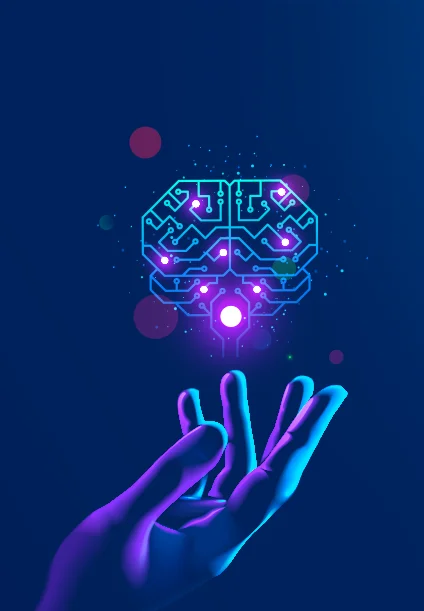Document digitization essentials: Organize, tag, and optimize
January 08, 2025
To keep pace with digital transformation, businesses must prioritize effective document digitization. A well-organized digital system enhances productivity by improving information access, streamlining workflows, and bolstering data security and compliance. By digitizing documents, organizations can generate valuable insights and support informed decision-making, ensuring they stay competitive in an increasingly digital landscape.
Key steps to an efficient digitization process
This process involves three main steps: collecting data, labelling it for easy organization, and arranging files into a structured system. By following these steps, you can quickly locate and access the required information, and ensure safety and compliance. Let’s explore how to make each step as efficient as possible when converting documents.
1. Streamlining data capture: The first step in digitization
Capturing data is the first step in turning paper documents into digital ones. This means using good scanners and OCR software to change paper documents into digital files that can be easily accessed. OCR helps pull text from scanned documents turning them into searchable data. The benefits of efficient data capture include:
=> Increases accuracy by reducing manual data entry
=> Speeds up the digitization process
=> Enhances searchability, making documents easy to retrieve
By using advanced scanning and OCR technology companies can make sure that data capture is fast and accurate which sets the stage for a seamless digitization process.
2. Enhancing searchability with metadata tagging
Metadata tagging is the process of adding labels to documents with keywords categories or dates to make them easy to find and organize. For example, tagging an invoice with information like the vendor's name and the date it was created helps with quick searching and sorting. Common metadata categories include things like the type of document, its creator, and the date/time it was last modified.
3. Organizing digital files for easy access and management
To maintain order, it is crucial to have a structured system for managing documents. A logical folder structure in a document management system (DMS) is key. For example, using a hierarchical folder system where files are sorted by department then by type and finally by date helps with easy navigation.
Here are some good ways to organize your documents:
=> Use clear and descriptive folder names so it's easy to know what's inside
=> Control who can access sensitive files
=> Regularly remove old files or store them elsewhere to keep the system running smoothly
By following these organization tips organizations can have a smooth digital document system that makes it easy to find and get the files needed.
4. Using automated workflows to boost efficiency
Automated workflows can streamline the digitization process further. With automation tools, tasks like tagging, categorizing, and routing documents can be done automatically, reducing the need for manual input. Automation not only saves time but also minimizes errors.
Key benefits of automation in digitization include:
=> Accelerates the overall digitization process
=> Reduces the chances of human error in metadata tagging and filing
=> Ensures that documents are processed uniformly across departments
Incorporating automation into the document digitization process can greatly enhance productivity and ensure accuracy, allowing employees to focus on more value-added tasks.
5. Securing digitized documents with access controls and permissions
Digital files that are like paper documents need to be kept safe. By setting restrictions on who can access and change sensitive information companies can make sure that only the right people can see it. This helps keep data private and also makes sure that organizations follow the rules.
To make sure documents are secure:
=> Decide who can see what based on their job
=> Use special codes to protect important information
=> Keep updating who can access files when staff changes
By focusing on keeping documents safe companies can make sure their digital files stay private and accurate which lowers the chance of data leaks.
6. Improving document retrieval with advanced search capabilities
It is important to have good search features in a digital document management system (DMS) to quickly find documents. These features include full-text search keyword, search, and filters based on document information. Investing in a strong DMS that has these functions can greatly speed up the process of finding documents.
Important search features to consider when choosing a DMS:
=> Ability to search the full text of all documents
=> Filters based on document information
=> Preview option to see document content before opening
Having a DMS with these search features helps employees find documents they need right away making them more productive and reducing frustration with searching for data.
7. Regular audits for system optimization
Regular system audits are essential to ensure that the digitization process is still effective for the organization. These audits help identify unnecessary files, ensure accurate information tags and evaluate the organization's file organization. During a system audit it is important to:
=> Identify and remove duplicate or unnecessary files
=> Verify the accuracy and relevance of information tags
=> Evaluate the organization of files to determine if there are more efficient methods
Performing these checks regularly helps maintain the smooth operation of the document system and ensures that digital efforts remain effective.
Conclusion
Enhancing document digitization goes beyond simply scanning files. It also involves capturing data accurately, adding tags for easy searching, and organizing it in a secure and easy-to-use system. As technology advances, staying updated with digital processes is the only way organizations can remain efficient in managing their data securely.
Quick Link
You may like
How can we help you?
Are you ready to push boundaries and explore new frontiers of innovation?


